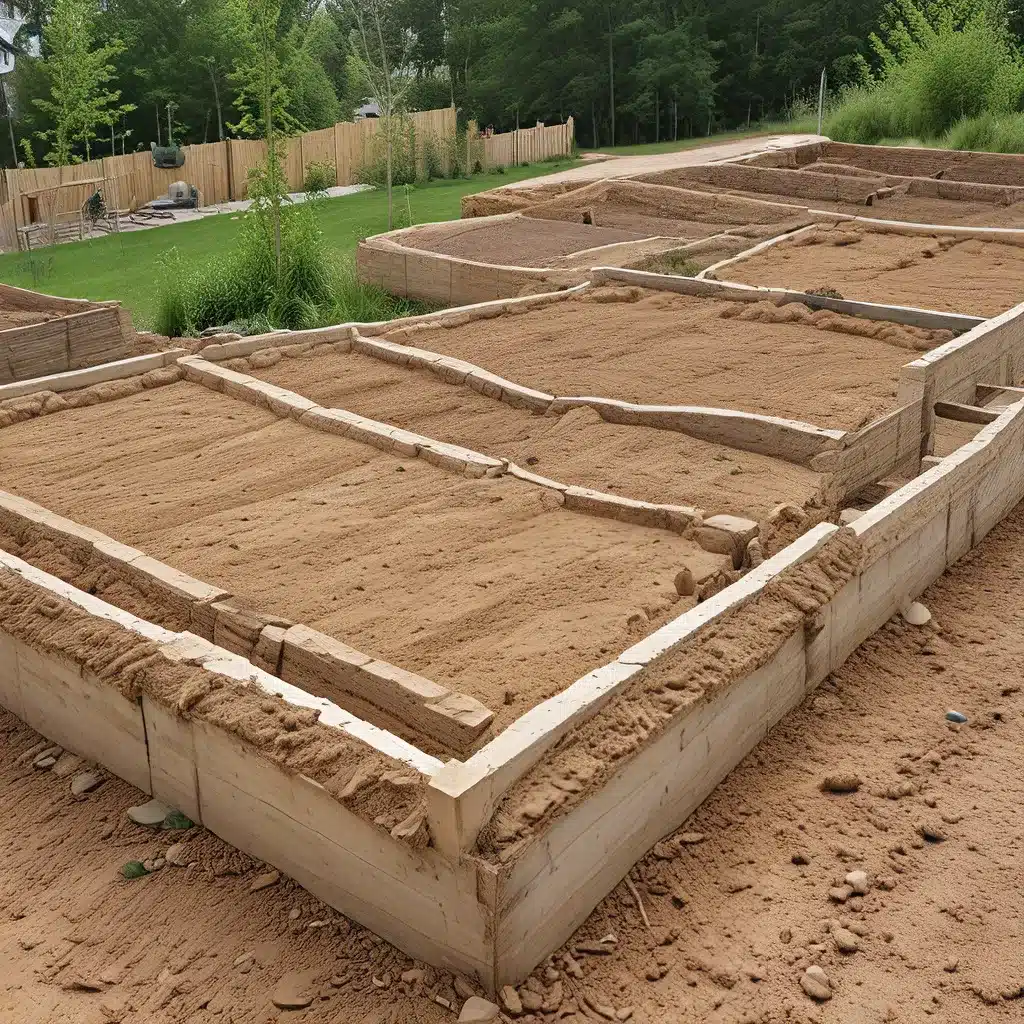
The Foundations of a Green Revolution
There I was, a drink in hand, deep in conversation with a group of fellow architects and building professionals. The topic? Frost-protected slabs. I know, it doesn’t exactly scream excitement, but let me tell you, the energy in that room was palpable. We all had our own unique approaches, our own little tricks of the trade, and we were learning from each other like giddy students. I walked away thinking, “We should do a podcast on this!” But then I realized, how on earth would we convey all the intricate drawings and details through an audio format? Well, with a little liquid courage and a lot of determination, here we are.
In this article, we’re going to delve into the world of eco-friendly foundations – the unsung heroes of the green building revolution. Because let’s face it, if the foundation ain’t right, the whole house of cards comes tumbling down. But fear not, my friends, we’re going to explore the latest and greatest in sustainable foundation materials, techniques, and strategies, all with a healthy dose of personality, of course.
Frost-Protected Slabs: The Cold, Hard Facts
As I mentioned, frost-protected slabs were a hot topic of discussion among my fellow building enthusiasts. And for good reason – they’re a game-changer when it comes to energy-efficient foundations. Traditional concrete slabs are great and all, but they tend to be a bit, well, energy-hungry. That’s where frost-protected slabs come in.
These bad boys use a combination of insulation and strategic placement of heating pipes to keep the ground underneath the slab from freezing, even in the harshest of winters. This not only reduces the amount of concrete needed (saving you money and resources), but it also dramatically improves the slab’s thermal performance, keeping your home cozy and your energy bills low.
Now, I know what you’re thinking – “But wait, won’t all that fancy insulation and piping make the whole thing a lot more complicated?” Well, you’re not wrong, but trust me, the payoff is worth it. And the best part? You can actually work with your local code enforcement officers to come up with custom solutions that meet or even exceed the less-than-adequate requirements in the International Residential Code (IRC) Section 4033.
Screw Piles: The Foundations of the Future?
But wait, there’s more! Let’s talk about screw piles – the foundations of the future (or at least, that’s what I like to call them). These bad boys are essentially giant screws that you drive into the ground to support your home’s structure. And let me tell you, they have some serious benefits when it comes to eco-friendly construction.
First and foremost, screw piles require significantly less concrete than traditional foundation methods. This means a smaller carbon footprint, less waste, and a whole lot of happy Mother Nature. Plus, they’re incredibly versatile – you can use them to support everything from tiny homes to massive multi-story additions.
But the real beauty of screw piles lies in their installation process. Instead of digging deep, energy-intensive holes and pouring tons of concrete, you literally just screw them into the ground. It’s like building a massive Lego set, but for your house. And the best part? You can even use them to elevate your home, keeping it high and dry even in the face of rising sea levels or flood-prone areas.
Sustainable Foundation Materials: Greener Pastures
Now, let’s talk about the materials themselves. Because when it comes to eco-friendly foundations, it’s not just about the design – it’s about the building blocks, too. And let me tell you, there are some seriously impressive options out there.
One of the standout contenders is rammed earth. Yes, you read that right – earth, rammed into place to create a sturdy, insulating foundation. It’s like something out of a storybook, but it’s real, and it’s seriously eco-friendly. Not only does it use local, natural materials, but it also has a remarkably low carbon footprint compared to traditional concrete.
But rammed earth isn’t the only game in town. There’s also hempcrete, a magical mixture of hemp fibers, lime, and water that can be used to create strong, insulating foundations. And let’s not forget about recycled plastic piles – these babies are made from reclaimed plastic waste, giving new life to old materials and keeping them out of landfills.
The best part? These sustainable foundation materials don’t just look good on paper – they’re proven to perform. They’re durable, energy-efficient, and, in many cases, even more cost-effective than traditional methods. It’s a win-win-win situation, and I, for one, am here for it.
The Foundations of a Green Future
As I sip my cocktail and reflect on our conversation, I can’t help but feel a sense of excitement and optimism about the future of eco-friendly foundations. From frost-protected slabs to screw piles and sustainable materials, the possibilities are endless.
But it’s not just about the cool new technologies and materials – it’s about the bigger picture. General contractors and construction professionals like us have a unique opportunity to lead the charge in the green building revolution. By embracing these innovative foundation solutions, we can create homes that are not only beautiful and comfortable, but also environmentally responsible and energy-efficient.
And you know what they say – it all starts from the ground up. So let’s get out there, roll up our sleeves, and build a greener future, one eco-friendly foundation at a time. Who’s with me?
Related posts:
No related posts.




